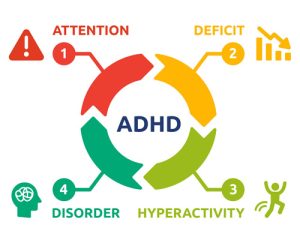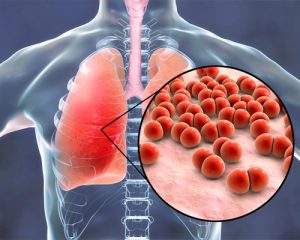 Adderall is a prescription drug that is widely prescribed in treating Attention Deficit Hyperactivity Disorder (ADHD) and narcolepsy. This article contains detailed information regarding the effects of Adderall, ADHD medication use, dosage guidelines, side effects, contraindications, and other related things about prescription stimulants.
Adderall is a prescription drug that is widely prescribed in treating Attention Deficit Hyperactivity Disorder (ADHD) and narcolepsy. This article contains detailed information regarding the effects of Adderall, ADHD medication use, dosage guidelines, side effects, contraindications, and other related things about prescription stimulants.
Adderall is a combination of amphetamine salts into a branded product that acts as a central nervous system stimulant. Adderall is prescribed mainly for Attention Deficit Hyperactivity Disorder (ADHD) and narcolepsy, both of which can impair concentration (focusing) and wakefulness (alertness). Such increase in neurotransmitters in the brain–dopamine and norepinephrine–helps improve attentiveness and focus. Key Terms:
While the mechanism is somewhat preserved across patients, the CNS stimulation is increased by a greater concentration of neurotransmitters. For example, when dopamine increases–the neurotransmitter attached to pleasure and motivation-or norepinephrine, a neurotransmitter and brain stimulant associated with alertness and energy, is elevated, individuals tend to have better attention focus and level of energy. This explains why most people find relief for ADHD with Adderall as treatment for narcolepsy’s associated excessive daytime sleepiness.
Although quite beneficial to many, users must ensure use according to the prescribed doses and instructions so as to minimize any potential risks.
Take as prescribed by your doctor. To obtain the maximum benefit and to prevent the possibility of adverse effects, follow these step-vises:
Adderall dosage guidelines vary between individuals due to age, weight, severity of symptoms, and other personal differences. These are general dosage guidelines:
Only a qualified medical professional may adjust dosages. This occurs after assessing the patient’s medical history, response to treatment, and any other potential conditions involved.
 Prospective Side Effects
Prospective Side EffectsEveryone knows that Adderall helps manage symptoms associated with ADHD, but not everyone tolerates it well. Some may experience side effects, which differ from mild to severe.
Before taking Adderall, it is essential to take into account all contraindications (conditions that make the use of the drug inadvisable) and precautions.
Contraindications:
Precautionary Measures:
The information given in this article is intended for educational purposes only and should not be considered a substitute for individualized advice from a qualified health care provider. Adderall is a prescription medication to be taken only under the proper supervision of a qualified medical practitioner.
The reader must consult a doctor prior to starting, stopping, or modifying the use of Adderall. While this article cites the CDC, WHO, and reputable centers such as the Mayo Clinic, patient care in any situation should always be left to the discretion of the treating medical professional, based upon individual patient circumstances.
Adderall is a prescription powerhouse stimulatory drug, and it can actively interact with other medications, perhaps reducing its efficacy and increasing serious adverse side effects. Some of the possible drug interactions include the following:
Make sure you always tell your doctor about any medications or supplements that you are taking to avoid possible drug interactions.
It is advisable to have routine follow-ups with the doctor assigned to you when taking Adderall. Monitoring assists in making sure the medication is effective and the adverse effects are well controlled. Any changes in health or any side effect felt should be discussed by the patients.
Monitoring Recommendations Include:
Using tools such as infographics or diagrams is an excellent aid for explaining Adderall’s functioning and precautions for the secure use of this drug. Following is a brief schematic outline of this:
Beyond just taking their medications, patients receiving Adderall treatment must be encouraged to take a holistic approach to tackling ADHD or narcolepsy. Lifestyle changes complement drug action:
Coordination among the patient, doctors, and possibly therapists is central to the holistic treatment and the best overall outcome.
The context of Adderall is often marred by a variety of misconceptions, especially regarding its effectiveness and its abuse potential. The common assumptions attacking the usefulness of Adderall shall be put at rest by the following facts:
Adderall is a crucial medicinal agent in treating ADHD and narcolepsy. It builds up neurotransmitter levels in the brain, thereby providing significant advantages for patients experiencing attention deficit and hypersomnolence. Like any medication, with the potential abuse, and with side effects, it needs to be prescribed and monitored by health care professionals.
Here is a summary of the key points at a glance:
For those considering or currently using Adderall, open communication with health care providers, strict adherence to prescriptions, and behavioral and lifestyle changes can all come together for a successful management plan.
The information herein has been supported by reputable sources, such as:
Readers are encouraged to visit these sites, in conjunction with their healthcare providers, for further and updated information about Adderall and the possible management of ADHD and narcolepsy.
Adderall is a major prescription stimulant that brings forth continued efficacy for individuals suffering from ADHD or narcolepsy. Such benefits are quite valuable for people who face problems with attention, concentration, or experience excessive sleepiness when used properly. With responsible use, close medical supervision, and adherence to comprehensive guidelines, patients can experience improved quality of life and better management of their symptoms.
Remember: The information offered in this document is meant for purely educational means and shall not be interpreted as a substitute for expert medical advice. Queries and doubts regarding medicines or any other health-related conditions should, therefore, be directed to health care providers immediately.
With informed use and proactive healthcare, patients and health teams can work together to balance the benefits of Adderall while minimizing risks.
 Every year, lung diseases affect millions around the globe. This guide is particularly for the recently diagnosed and caretakers unfamiliar with their loved ones’ illness. It provides clear information about lung diseases, causes, and symptoms. The present article will review important lung diseases, including chronic obstructive pulmonary disease (COPD), asthma, bronchitis, and lung cancer. The article will discuss the prevention methods and regular checkups for maintaining healthy lungs, with some case studies provided.
Every year, lung diseases affect millions around the globe. This guide is particularly for the recently diagnosed and caretakers unfamiliar with their loved ones’ illness. It provides clear information about lung diseases, causes, and symptoms. The present article will review important lung diseases, including chronic obstructive pulmonary disease (COPD), asthma, bronchitis, and lung cancer. The article will discuss the prevention methods and regular checkups for maintaining healthy lungs, with some case studies provided.
Lung diseases refer to conditions that have an implication for lung function, variable in intensity from mild to moderate to very severe, affecting breathing and general health.. Most of the time, lung disease symptoms include shortness of breath, a cough, or, quite rarely, chest pain. These symptoms may vary in severity from person to person, but early diagnosis is a must for treatment and management.
The importance of early detection in lung diseases cannot be overemphasized. Many of the nascent symptoms of lung diseases could be a mild cough or minor discomfort in breathing and could often go undetected until serious consequences appear.
Mild lung disorders could display symptoms easily managed merely by lifestyle changes and little medical interventions. One good example is mild asthma,whereby dust, pollen, or respiratory infections trigger episodes of mild shortness of breath accompanied by wheEZing.
A situation in real life: Sara, who is 32 years old and a teacher, found breathlessness in periods of pollen influx. At her consultation, her doctor prescribed an inhaler and counselling on avoiding some specific triggers. Early intervention and lifestyle changes markedly improved and controlled her symptoms. Along with her management plan, Sarah was advised to keep a close check on her “lung disease symptoms.”
Moderate lung diseases usually require more active medical management than mild ones. Bronchitis is an upper respiratory tract infection (present for more than three weeks) that may follow an infection or be due to sustained exposure to pollutants and can present with mild or moderate symptoms of a cough with sputum associated with fever.
Most patients cite cough and other symptoms they recognize as “lung disease symptoms” as interfering with their days. For example, the story of John describes a construction worker aged 45 who developed progressive cough and mild chest pain after multiple episodes of bronchitis. His doctor recommended antibiotics and rest with fluids; John improved gradually but was warned to take precautions to prevent recurrent infections.
Severe lung disorders often impact an individual’s quality of life tremendously. Two such conditions, COPD or chronic obstructive pulmonary disease (COPD) and lung cancer, become life-threatening without timely intervention. COPD results from long-standing exposure to irritant particles and gases-cigarette smoke and air pollution-which produces appreciable breathlessness to severely limit physical activity.
Lung cancer, conversely, involves the unregulated division of abnormal cells in lung tissue; it is most often linked to long-term cigarette smoking, yet genetic predisposition or environmental exposure may also affect non-smokers. Symptoms of lung disease including unexplained coughing, fatigue, or weight loss should be followed up with a consultation to the healthcare provider as soon as possible.
Real-life example: Observable to Michael, at 60, a former smoker, were signs he called minor “lung disease symptoms”: intermittent coughing and fatigue. Months later, his condition worsened, and he was diagnosed with early-stage lung cancer. His story points to the need for paying attention to even slight variations in health and seeking professional help as soon as anything goes wrong.
 Chronic Obstructive Pulmonary Disease (COPD)
Chronic Obstructive Pulmonary Disease (COPD)COPD is an insidious progressive lung disease dealing chiefly with emphysema and chronic bronchitis. It is characterized by the obstruction of airflow from the lungs, causing difficulty in breathing and lesser intake of oxygen. Patients suffering from COPD frequently show symptoms of “lung disease,” including chronic cough with sputum production and shortness of breath. Other risk factors in the long term include smoking, exposure to air pollution, and occupational hazards.
New guidelines for prevention and management of COPD are developed and revised over time by the World Health Organization (WHO) and the Centers for Disease Control and Prevention (CDC). Both organizations prioritize lifestyle modifications, particularly smoking cessation, physical activity, and a healthy diet, as significant factors in interfering with the progression of the disease.
Asthma is one of the most prevalent chronic lung diseases, particularly among children and young adults. It is characterized by inflammation of the airways and interest in relating to narrowing of the airways, resulting in recurring episodes of wheezing, chest tightness, and breathlessness. Multiple asthma subjects relate to the phrase “lung disease symptoms” as they experience these intermittent episodes that may worsen in the presence of a trigger such as allergens, smoke, or respiratory infections.
Asthma management can incorporate inhaler or oral medications, avoiding known triggers, and education on self-management and regular monitoring. WHO and CDC guidelines will provide much greater attention to the development of an asthma action plan, covering the use of medications, when to use them, and when to seek emergency care.
Bronchitis denotes inflammation of the bronchial tubes, which carry air to and from the lungs. There are two types of bronchitis: acute and chronic. Acute bronchitis is usually due to viral infections while chronic bronchitis is usually associated with prolonged exposure to irritable substances such as tobacco. The patients, here, mostly experience “lung disease symptoms” in the form of productive cough, mild fever, and malaise. The acute form generally resolves within months, whereas chronic bronchitis might be subject to prolonged management and lifestyle changes.
Preventive measures may include stopping smoking, avoiding polluted environments, and getting vaccinated against respiratory infections, which may greatly help reduce the incidence of bronchitis episodes.
Lung cancer ranks among the most aggressive of all lung diseases given the high mortality rate. The late-stage diagnosis of lung cancer accounts for the highest mortality rates. The development of lung cancer is most commonly associated with long-term smoking, although others may be genetically disposed to it or may continue to develop the disease due to non-oncogenic environmental factors such as exposure to radon gas. The presence of early “lung disease symptoms,” such as change in the character of a cough, blood in sputum, or unexplained weight loss, should lead to an early visit to a physician.
New WHO and CDC guidelines state that early detection by screening methods, utilizing low-dose computed tomography (CT) scans, is critical for achieving better outcomes. Depending on the stage of the cancer, treatment may consist of surgery, chemotherapy, radiation, or targeted therapies.
Prevention is one of the principal management avenues for lung diseases. Lifestyle modalities and environmental modifications can prevent or retard the pace of lung diseases. Changes in breathing or the functional status of the lung should be appreciated, regardless of whether the symptoms are weak or strong.
Changing these few habits can bring a large change in lung health and general well-being. Many patients believe that taking these measures on the preventive front can actually help them reduce recurrent “lung disease symptoms” to a large extent and live happily.
Understanding real-life examples can help illuminate the importance of early detection and appropriate treatment. Consider the story of Emma, a 40-year-old office worker who experienced mild shortness of breath and occasional coughs that she initially ignored. Her routine annual checkup eventually revealed early signs of COPD. With prompt action, Emma worked with her healthcare provider to implement smoking cessation, start pulmonary rehabilitation, and adopt a healthier lifestyle. Emma’s journey underscores how responsive care can limit the impact of chronic lung conditions.
Another inspiring case is that of Robert, a 55-year-old non-smoker who was diagnosed with asthma in his early thirties. Although his condition was moderate at times, regular checkups and adherence to an asthma action plan enabled him to live an active life. Robert’s story emphasizes the importance of monitoring “lung disease symptoms” even when they appear manageable.
Regular monitoring of your lung health is essential, especially if you experience any “lung disease symptoms.” Early diagnosis and proactive treatment are key to managing lung conditions effectively. The following steps can help you schedule regular lung health checkups:
By taking these steps, you can stay proactive about your lung health and take advantage of early intervention methods. Remember, the management and prevention of lung diseases are not just about treating symptoms—they are fundamentally about leading a healthier life.
Lung diseases such as COPD, asthma, bronchitis, and lung cancer continue to impact many lives globally. Understanding the causes, recognizing early “lung disease symptoms,” and making essential lifestyle adjustments are critical steps in managing and preventing these conditions. By following the current WHO and CDC guidelines and monitoring symptoms closely, patients and their families can work together with healthcare professionals to ensure the best possible outcomes.
This comprehensive guide has explored both the mild and severe spectrums of lung conditions, highlighted preventive strategies, and shared real-life experiences to provide insight into living with chronic lung diseases. Most importantly, it emphasizes that regular checkups and proactive management are cornerstones of effective lung health care.
Whether you are currently experiencing symptoms or simply aiming to prevent future issues, staying informed and vigilant about lung disease symptoms is essential. Taking the right steps early can greatly influence your long-term respiratory health.
We hope that this guide has provided you with valuable information and actionable insights that empower you to take control of your lung health. Remember, early detection—even of mild “lung disease symptoms”—can be life-changing.
Take charge of your respiratory health today. To schedule your next lung health checkup, follow the steps above, and speak with your healthcare provider about the best plan for you and your family. A proactive approach can make all the difference.
 Attention-deficit/hyperactivity disorder (ADHD), as a neurodevelopmental disorder, is characterized by pervasive patterns of inattention, hyperactivity, and impulsivity. Pharmacotherapy remains a cornerstone of ADHD management for many patients whose symptoms truly compromise academic or occupational endeavor, or social functioning. Among the most commonly prescribed classes of agents are the amphetamine salts, with dextroamphetamine and amphetamine therein. This article sets forth a detailed account of the pharmacologic mechanisms, clinical efficacy, safety, interactions, contraindications, and monitoring requirements of these agents. This discussion is tailored toward the particular audience of clinical professionals and practitioners whereby such knowledge is required from a rigorous evidence-based platform and through the level of graduate medical education.
Attention-deficit/hyperactivity disorder (ADHD), as a neurodevelopmental disorder, is characterized by pervasive patterns of inattention, hyperactivity, and impulsivity. Pharmacotherapy remains a cornerstone of ADHD management for many patients whose symptoms truly compromise academic or occupational endeavor, or social functioning. Among the most commonly prescribed classes of agents are the amphetamine salts, with dextroamphetamine and amphetamine therein. This article sets forth a detailed account of the pharmacologic mechanisms, clinical efficacy, safety, interactions, contraindications, and monitoring requirements of these agents. This discussion is tailored toward the particular audience of clinical professionals and practitioners whereby such knowledge is required from a rigorous evidence-based platform and through the level of graduate medical education.
Dextroamphetamine and amphetamine stand out among a class of central nervous system stimulants because of their therapeutic efficacy in treating ADHD symptoms and treatment-refractory narcolepsy. Their mechanisms of action, safety, and abuse potential demand careful clinical attention when starting and continuing therapy. Although clinical efficacy is well documented, there is the continuing need for knowledge regarding adverse effects, drug interactions, and long-term safety concerns, together with suitable strategies for risk management.
Dextroamphetamine and amphetamine, acting primarily on monoamine systems, are efficacious in clinical treatment. The mostly dopaminergic and noradrenergic pathways are affected. Mechanistically, they promote the release of dopamine (DA) and norepinephrine (NE) from presynaptic nerve terminals whilst also inhibiting their reuptake, resulting in increased synaptic concentrations of these neurotransmitters and an increase in neurotransmission in the specific brain regions associated with attention, executive function, and behavioral regulation.
The dextro form of amphetamine has a pronounced stimulant effect on the central nervous system compared to its levo counterpart. The drug profile hints at this preference leading to a therapeutic angle between the dextroamphetamine and the core ADHD symptoms [3]. Both agents affect intracellular signaling pathways indirectly, with more recent studies suggesting a secondary mechanism whereby catecholamine receptor modulation would contribute to its efficacy as well as its side effect profile.
Amphetamine-based treatments have been shown in several randomized controlled trials and meta-analyses to be effective in the treatment of ADHD. Clinical rating scales examine sustained attention, inhibitory control, and regulation of behavior. Decreased inattention and hyperactivity as a result of stimulant therapies with dextroamphetamine and amphetamine salts directly improved the patients’ quality of life and enhanced functional outcomes at the academic and occupational level, as highlighted in comparative studies.
The variable response to therapy in patient subpopulations needs to be considered. ADHD symptoms are heterogeneous; therefore, individualized treatment planning deserves precedence. The persistence of treatment effect beyond the immediate pharmacological duration of action of the extended-release forms has been the subject of ongoing research and clinical debate. Adequate dose titration to strike a balance between therapeutic benefits and minimizing side effects is necessary.
The pharmacokinetics of these drugs involve the rapid absorption and high bioavailability of orally administered agents. Dextroamphetamine has relatively short elimination half-time, around 10 to 12 hours, resulting in the production of extended-release formulations that keep therapeutic plasma levels during the day. These agents are metabolized largely through the liver, with most of the enzymes participating coming from the cytochrome P450 family, mainly CYP2D6. This pathway provides an underlay for many interactions with the drugs that are either substrates, inhibitors, or inducers of those enzymes.
To comprehend interindividual variability in metabolic rates will be essential-particularly considering genetic polymorphisms of CYP450 enzymes can exhibit tremendous differences across populations. Pediatric and geriatric patients require consideration-as pharmacokinetic parameters may greatly affect their efficacy and toxicity profiles.
The potential for drug interactions with amphetamine therapies creates the necessity for caution in this regard. Co-administration with MAOIs is contra-indicated due to the risk of hypertensive crisis from an excessive release of catecholamines. There may also be cumulatively worsening effects with other CNS stimulants or sympathomimetic agents that may enhance generic cardiovascular risks of tachycardia, hypertension, and arrhythmias.
Drug interactions with amphetamine therapy have also been demonstrated with SSRIs and certain antipsychotics, where altered neurotransmitter levels may lead to aggravation of side effects or attenuation of therapeutic responses. Furthermore, dose adjustments may be necessary for any antihypertensive treatment concomitantly administered in order to mitigate adverse hemodynamic effects. A comprehensive review of all medications provided by the health care professional is essential in order to reduce the risk of adverse effects; the use of interaction databases is strongly recommended.
 Contraindications and Populations Specialised Contraindicated for the use of dextroamphetamine and amphetamine are events cardiovascular in nature or severely structural congenital heart defects, as cardiomyopathy, arrhythmias, and coronary artery disease. Patients with hyperthyroidism and anxiety disorders severe, as well as glaucoma, would fall into that highly susceptible category and may, therefore, warrant alternative approaches to treatment. It goes without saying that any person with hypersensitivity to amphetamine compounds should be excluded from treatments of this kind. Special populations would include children, pregnant women, and nursing mothers, who would require a careful risk-benefit analysis.
Contraindications and Populations Specialised Contraindicated for the use of dextroamphetamine and amphetamine are events cardiovascular in nature or severely structural congenital heart defects, as cardiomyopathy, arrhythmias, and coronary artery disease. Patients with hyperthyroidism and anxiety disorders severe, as well as glaucoma, would fall into that highly susceptible category and may, therefore, warrant alternative approaches to treatment. It goes without saying that any person with hypersensitivity to amphetamine compounds should be excluded from treatments of this kind. Special populations would include children, pregnant women, and nursing mothers, who would require a careful risk-benefit analysis.
Dosages in the pediatric population must be slowly and carefully monitored and then watched for any adverse effects growth-related. Since teratogenicity and withdrawal syndrome of the neonate may pose risks for these patient categories, continued dialogue around risk mitigation versus alternative treatment therapies is warranted. While older adults may be at high risk for stimulant effects, they may require more intensive monitoring, specifically those who have underlying cardiovascular diseases.
Effective monitoring is one of the critical components in managing amphetamine-based therapies. Suggested baseline cardiovascular measurements, such as ECG, blood pressure, etc., assume cardiovascular risk factors. Regular follow-up goes along with clinical monitoring of vital signs, mental status, and assessment of parameters for growth (for pediatric patients) to ensure safety in treatment. Monitoring should take into consideration both neuropsychiatric symptoms such as exacerbation of anxiety, mood lability, and even in rare cases psychotic symptomatology, as well as periodic review of liver function tests, which, by nature of the drug’s metabolism and risk for drug-induced hepatotoxicity, may be necessary.
Such drugs are potential agents for abuse, so, for safety precautions, risk factors for each patient need to be assessed regarding the possibility of having a history of substance abuse disorders and concomitant psychiatric illnesses. The use of such a system will ensure comprehensive documentation of clinical efficacy/adverse effects, which could be beneficial to guide dosage adjustment and duration of therapy.
Controlled substances which include dextroamphetamine and amphetamine salts among other amphetamine based medications are all classified as such because they have the propensity for abuse and dependency. Misuse may cause adverse cardiovascular and neuropsychiatric events effects; it worsens in those people predisposed to having substance dependence [12]. Thus, its reinforcing effects have direct reference to dopaminergic pathways, which are greatly overlapping that reward system implicated in addiction.
Risk mitigation strategies include the careful selection of patients, educating prescribers and a medication monitoring program. It also necessitates stringent criteria for prescribing before initiating treatment to ensure that the case history of the patient is clear and treatment contracts implemented. Extended-release formulations and measures limiting the dose have been previously shown to be associated with a decreased level of diversion and misuse compared to immediate-release preparations.
The education of such patients, families, and caregivers is important with respect to the proper use and storage of the medication. PDMPs are one such tool to monitor the dispensing and possible misuse of stimulant medications. They might also include interprofessional collaboration among primary care providers, psychiatrists, and pharmacists to develop a clearly defined shared framework for outcomes evaluation and continued risk mitigation.
For amphetamine-based therapies in treatment of ADHD, the clinician must conduct intense risk-benefit assessment: These computed benefits must be weighed against the possible cardiovascular incidents and side effects psychiatric, and among them, OUD potential. The decision-making process is fortified through clinical guidelines adherence, routine monitoring, and timely therapy adjustment to adverse effects. Patient decision-making, as well as that of their families where applicable, must be included in ensuring appropriate informed consent and adherence.
Clinicians have a duty to keep abreast with evolving literature about long-term outcomes of alternative therapies that could minimize stimulant exposure. Ideally, the management of ADHD should include psychotherapeutic modalities, behavioral techniques, and lifestyle modifications; all of these are to be seen as adjuncts to pharmacotherapy.
New and enduring research continues to show fermenting effects from long-term amphetamine-based treatment into neurodevelopment. The latest neuroimaging studies hint at possible alteration in the structural and functional connectivity of circuits that are important for self-regulatory and attention processes due to chronic stimulant treatment. As yet, the clinical implications of such findings remain undefined and require further study to clarify the condition, especially as related to neuroadaptive changes that might yield such long-term cognitive and behavioural consequences.
The study of pharmacogenomics will allow the tailoring of drugs for patients on the basis of their metabolic profile and receptor polymorphisms. This personalized medicine perspective enables the possibility of individualized dosage, reduction of adverse effects, and avoidance of drug abuse in patients who might be susceptible to an amplified response or heightening the burden of side effects. Further confirmation for these new propositions and refining their clinical application in the treatment of ADHD with the use of dextroamphetamine and amphetamine would require post-marketing studies and continued monitoring.
Dextroamphetamine and amphetamines have been the cornerstone of ADHA pharmacological treatment. The rationale for their usage arises from established mechanisms of action, which increase dopaminergic and noradrenergic neurotransmission. The undeniable positive impact of the drugs considered requires awareness about possible interactions with other drugs and contraindications as well as nurturing the aspect of continuous monitoring. A risk of cardiovascular complications and neuropsychiatric side effects comes with a possibility of abuse; hence these considerations are imperative for treatment individualization and interdisciplinary care coordination.
Future investigations into improving pharmacogenomic techniques and alternative risk-reduction strategies will positively inform and contribute to patient management. The ability to best manage these drugs and thereby improve therapeutic outcomes in ADHD will be dependent upon the ability of doctors to integrate clinical judgment with the emerging evidence.
 Introduction
IntroductionTramadol is a centrally acting analgesic that is most commonly used for the relief of mild to moderate pain. Tramadol may be useful for patients who are unlikely to benefit from non-opioid medications or to whom additional pain relief is needed in combination with other treatments. This guide is for patient and caregiver awareness and will address in-depth content about Tramadol, including its mechanism of action, use, side effects, dosage guidelines, and important warnings.
Tramadol acts in the brain and nervous system to change the way one feels and responds to pain. It is dual-acting: μ-opioid receptor agonist and norepinephrine and serotonin reuptake inhibitor. Because of this duality, it relieves pain and improves mood; for this reason, Tramadol is very useful in managing the patient’s pain.
Once ingested, tramadol undergoes hepatic metabolism to active metabolites, mainly O-desmethyltramadol, which binds to a central opioid receptor. Such binding action produces analgesia by altering perception and affective response to the pain. The antidepressant-like property of tramadol is conferred by inhibition of norepinephrine and serotonin uptake, which is advantageous in patients who suffer from chronic pain syndromes with psychological component.
Prescription Tramadol can be obtained in immediate-release, extended-release formulations, oral solutions, or injections. Adherence to the instructions given by a healthcare provider will maximize effectiveness while minimizing the potential dangers involved in proper use.
Tramadol is indicated for the treatment of moderate to moderately severe pain in adults, commonly such as:
The dose of Tramadol changes from patient to patient on the basis of various factors, like the condition of medical health, other medicines taken, and individual response against it. Some general suggestions include:
Never exceed the prescribed dosage as it can increase the risk of serious side effects and dependency.
Like every other medication, Tramadol has a good number of side effects; these can be classified according to severity and frequency so that they can be effectively anticipated and managed by patients and caregivers alike.
Usually mild side effects that tend to disappear over time as the body adapts to the medicine:
While less common, the following serious side effects require immediate medical attention:
Patients experiencing any of these serious side effects should seek emergency medical care.
Chronic use of Tramadol can lead to severe dependence and subsequent withdrawal effects upon its discontinuation. Patients should bring up their concerns about dependance with their healthcare provider, especially if they have a history of substance use disorder.
 Warnings Contraindications
Warnings ContraindicationsTramadol is not advised for use in patients who:
Interactions with numerous other medications are known for tramadol, with some elevating the risk of developing severe side effects. Hence, patients must report to their healthcare provider all current medicines, supplements, or even over-the-counter drugs they use, especially:
Caution in prescribing Tramadol in special populations is needed:
Many patients have shared their experiences with Tramadol, ranging from the benefits to the challenges in achieving pain management.
Jane shares: 47 years old “My doctor prescribed Tramadol after the surgery of my knee. It helped significantly because of which I could again resume my daily routine of walking with my dog and playing with my kids. In no time, I’ve been feeling myself again!”
John, 60, says: “I started taking Tramadol for chronic back pain, but it initially made me feel nauseous, but after talking to my doctor, who gave me an idea of how to deal with it, now it really works very well for pain relief.”
Linda, 35, states her concern, “I have been on Tramadol for a year and a half due to fibromyalgia. It really helps, but I’m always concerned that I might get hooked on it. I have been trying to bring this issue up to my doctor regularly and they are very helpful.”
Tramadol-a systemically used drug for pain management-may be considered a multi-focused agent for pain relief for many patients who confront such moderate to moderately-severe levels of pain. Knowledge regarding the Tramadol mechanism of action, appropriate use, side effects, and good communication with the health professional can improve the drug’s productiveness in pain relief. Always consult with your physician before altering any medications or treatment programs and promptly notify of any side effects or concerns. When used judiciously, Tramadol is definitely a useful agent in the armamentarium of pain management.
This guide wants to help patients and caregivers with the necessary insight to navigate the unknowns of pain management with Tramadol. Remember that efficient communication with healthcare providers will equally help in safe and optimal use of any drug.